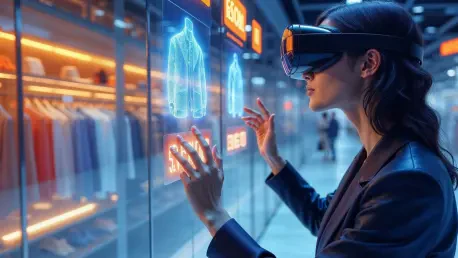In a world increasingly driven by technology, eCommerce and smart retail have emerged as game-changers with the potential to redefine shopping paradigms. The fusion of advanced technologies such as augmented reality (AR), artificial intelligence (AI), and virtual reality (VR) into these domains is not only enhancing the way consumers shop but also transforming business landscapes. This article delves into the current dynamics of eCommerce and smart retail, spotlighting their growth, innovations, and future prospects.
Present Dynamics of eCommerce and Smart Retail
Examining Growth Statistics
The growth of eCommerce and smart retail is nothing short of remarkable. Recent data showcases a significant surge, with global eCommerce platforms registering an unprecedented rise in user engagement and sales volumes. Adaptation statistics reveal that online shopping is outpacing traditional retail, demonstrating substantial shifts in consumer preferences. Reports from market analysts indicate that leveraging technologies like AR and AI is a critical factor in this upward trajectory, enabling retailers to offer more personalized and efficient shopping experiences.
Case Studies and Practical Innovations
Real-world applications of cutting-edge technologies are propelling eCommerce and smart retail into new frontiers. Notable examples include IKEA’s use of AR to let customers visualize furnishings in their own homes, thereby enhancing purchasing confidence. Meanwhile, Sephora’s virtual showrooms harness VR to provide immersive product experiences. These implementations illustrate how businesses are creatively employing technology to bridge the gap between physical and digital shopping environments, ultimately offering memorable and interactive consumer interactions.
Perspectives from Industry Experts
Industry leaders are pivotal in shaping the narrative around smart retail’s current journey and its potential pitfalls. Insights from experts illuminate the numerous challenges retailers face, including data privacy concerns, integration costs, and ever-evolving consumer expectations. However, these leaders also emphasize strategies to overcome such hurdles, such as fostering strategic technology partnerships and investing in agile infrastructures. There is a consensus that adaptability and innovation are keys to thriving in this rapidly changing retail landscape.
Future Outlook and Potential Outcomes
The horizon for eCommerce and smart retail continues to expand with countless possibilities. Innovations on the horizon include blockchain for enhanced supply chain transparency and voice commerce, making shopping even more intuitive and accessible. However, with these advancements come potential repercussions, such as heightened competition and challenges in maintaining data security. Industries must prepare for both the positive outcomes—like increased customer satisfaction—and the challenges that accompany such rapid evolution.
Concluding Insights
In conclusion, the remarkable rise of eCommerce and smart retail has redefined the shopping landscape, equipping consumers with unprecedented access and convenience. The embrace of advanced technologies like AR, VR, and AI has been instrumental in this transformation, creating seamless experiences that merge physical and virtual shopping realms. Companies are expected to navigate dynamic terrain, understanding that elevating consumer experiences is essential to remain competitive. As technology continues to evolve, businesses that strategically integrate these innovations and address emerging challenges are likely to thrive in this evolving market landscape.








